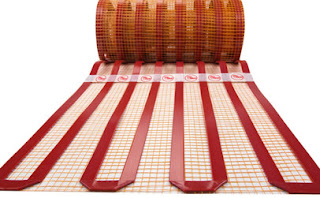The Most Innovative Things Happening With Radiant Floor Heating
Floor heating matting system or cable, which should I choose? This is something many homeowners wonder about!
Floor Heating Mats and cables are two types of
heating systems that are commonly installed in homes today. They both heat the
air inside the home, but they differ in their installation methods. Heating
mats are typically placed under the carpet, whereas cables are attached to the
ceiling. Both options offer benefits and drawbacks, so it’s important to
consider your budget, space requirements, and other factors before choosing
between them.
Floor Heating Mat vs. Cable –
Deciding On A Better Choice
Floor Heating Mat and cables, both are effective
ways to warm up your home. The main difference between them is that mats rely
on radiant heat whereas cables use electricity to create heat. Both options are
great for homes with low ceilings, but they each have their pros and cons.
Floor heating systems are
designed to heat floors without using electricity or gas. They provide warmth
underfoot and prevent cold spots in rooms. These mats also reduce energy bills.
A mat uses Radiant Floor Heating methods to warm up floors. The heat
comes from infrared radiation emitted by a special material called ceramic
tile. This tile is placed directly on top of the floor. The tiles emit heat
through their surface, which heats the floor underneath.
These Under Floor Heating
mats are becoming increasingly popular because they provide a cost-effective
solution to heat floors. Radiant Floor Heating also offers several benefits
over conventional systems such as being environmentally friendly, easy to
install, and has no moving parts. They’re also easier to install than cable
heaters, and they offer many other benefits, including being cheaper and more
efficient.
.jpg) |
| Radiant Floor Heating |
On the other hand, Under
Floor Heating cables consist of a long length of wire that runs through
holes in the baseboard or floorboards. The wire heats up as electricity passes
through it, creating a warm feeling underfoot. However, they come with some
drawbacks. For example, they don’t work well in wet areas such as bathrooms and
kitchens. Also, they tend to get very hot, which means you need to be careful
where you put them.
Which Is More Economical?



Comments
Post a Comment